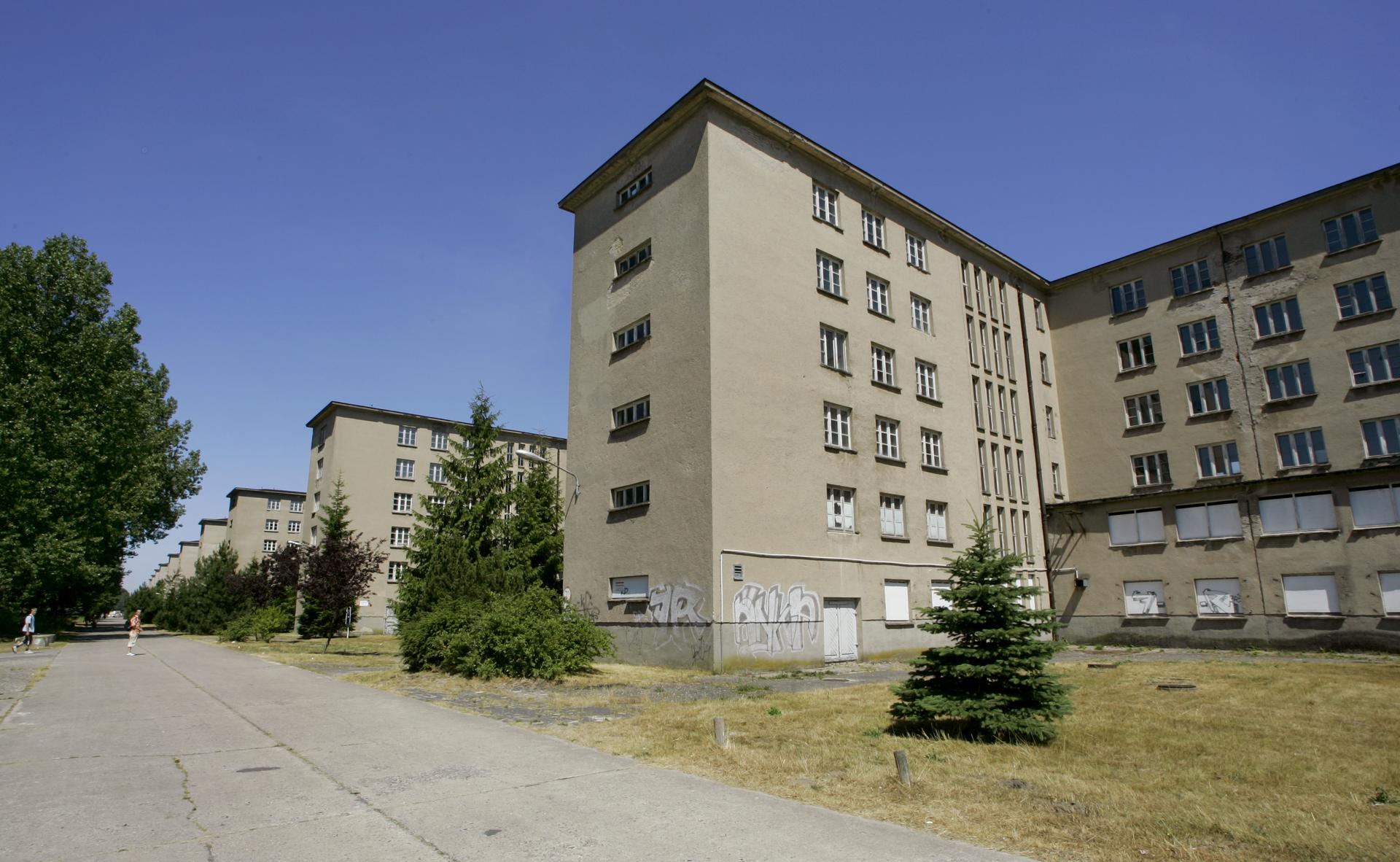A failed Nazi beachfront resort will undergo a radical transformation
Stretched along three miles of one of Germany's best beaches in Prora on the Baltic Sea island of Ruegen, the biggest hotel the world never saw – a forbidden hulk of 10,000 rooms built by German Nazi leader Adolf Hitler as a holiday camp to ready the masses for war. Locals call the crumbling concrete complex the Colossus of Prora. World War Two started before he could finish the resort at Prora. But the scale of what was completed illustrates Hitler's megalomania more forcefully than other famous surviving Nazi structures such as Berlin's Olympic stadium or the derelict site of the Nuremberg rallies. Picture taken July 12, 2005.
One of the biggest relics left behind by the Nazis is undergoing a radical transformation on a German island, harnessing a property boom to become a luxury tourist destination.
Developers are now bringing to life the hulking gray ruin at Prora where Adolf Hitler failed to realize his dream of a giant beachfront indoctrination camp.
The planned resort has once again entangled economic interests with historical memory in Germany, where the past looms large at evocative sites across the country and a generation of survivors is dying off.
The original complex was intended for up to 20,000 Germans as part of the Third Reich's so-called Strength Through Joy propaganda program, whose other lasting achievement was the Volkswagen Beetle "people's car".
Recreation and hearty exercise would have been coupled with on-site ideological teaching to build loyalty to the Nazis and strong racial identity among the "Aryan" working class.
Building started in 1936 but halted with the onset of World War II in 1939, leaving a concrete skeleton known as the Colossus of Prora stretching 2.8 miles down one of Germany's most stunning beaches.
Under East Germany's communist state, the camp served as military barracks so secretive that they did not appear on travel maps.
Eerie relic
"This is a site that quintessentially stands for both the Nazi and the communist eras, where you can gain a complete picture of how both systems worked," the director of one of two Prora museums, Susanna Misgajski, said.
"Military conscripts, prisoners of war, forced laborers, refugees — they were all in Prora at various points."
Since the regime's collapse in 1989, the complex continued to crumble.
After years of false starts, four of the eight original uniform six-story blocks are being developed.
A fifth went to the cash-strapped regional government, which allowed a youth hostel to open in 2011 and now aims to sell it off entirely. Blocks six and seven belong to a shadowy company from Liechtenstein. The Soviets blew up block eight.
The Prora Solitaire complex opened this summer complete with a cream-colored facade, glass-fronted balconies, swish apartments and an on-site spa.
The new look is targeted at moneyed urbanites, with a ramshackle art gallery and the down-at-the-heel "Miami" nightclub now gradually giving way to a hipster burger joint and a bakery serving latte macchiato.
"On the one hand, there's an interest in maintaining it as a memorial," said sales representative Werner Jung of Irisgerd real estate, which is building the neighboring 270-flat Neues Prora (New Prora).
"And on the other, there are the interests of the investors who have put a lot of money into this and want to see something for it. I think it's a pretty good compromise."
The company bought its block for $3.1 million in 2012 and put about $98 million into the renovation.
Ninety-five percent of the apartments have been sold, thanks to tax breaks afforded to investors in listed buildings, a healthy economy, and record low-interest rates.
Prices range between $390,000 for a 1,000 square foot ground-floor flat and $725,000 for a penthouse with a spectacular sea view.
"It is basically the last new complex in Germany where you have direct access to such a gorgeous beach," Jung said.
Enduring awe
But opinions are divided about the dramatic changes, which are expected to be completed by 2022.
"We have enough memorials in Germany," said Karsten Rarrasch, 50, a postman from nearby Stralsund who was building a sandcastle with his grandson.
"So many years have passed, it's time to make something beautiful out of Prora."
However, Katja Lucke, chief historian at another private museum on site, said that while developers have rescued the building from disintegration, they should do more to own up to its murky origins.
"This is a place where 20,000 people were to be groomed to work and wage war," she said.
Misgajski added that witness accounts indicate that between 500 and 600 forced labourers worked on the complex under the Nazis.
The two museums hope to merge in a permanent space to ensure that Prora's history is not whitewashed or forgotten.
But the plan will depend in part on the outcome of an election on September 4 in Mecklenburg-Western Pomerania state, Chancellor Angela Merkel's home district, as to whether they can count on government support.
The right-wing populist Alternative for Germany (AfD) is polling at around 20 percent with an anti-migrant platform — within striking distance of Merkel's conservatives.
"Of course, it isn't a Nazi party but the AfD has grown strong because the refugee problem has scared people, particularly those without much contact with foreigners," Misgajski said, noting that Prora's youth hostel was used to house asylum seekers last winter.
She said the resurgence of extremism was yet another reason why Prora needed to be preserved to bear witness.
The complex belongs to a small group of mammoth Nazi relics including the Nuremberg party rallying grounds and Berlin's grandiose semi-circular Tempelhof airport terminal.
Lucke noted that the Nazis' architectural ambition was intended to inspire awe, an effect that endures to this day and demands sensitivity of developers.
"Of course, people see this gigantic complex and are fascinated by it. But you cannot afford to make it banal. You have to put it in context."
